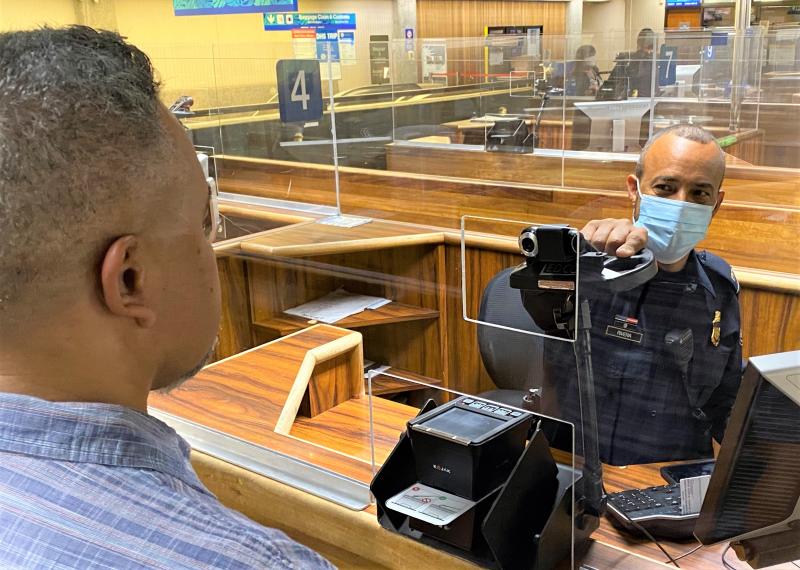
of an international traveler at HNL.
HONOLULU — U.S. Customs and Border Protection (CBP) in partnership with the Hawaii Department of Transportation (HDOT), announced today the implementation of the Simplified Arrival process at the Daniel K. Inouye International Airport (HNL). Simplified Arrival is an enhanced international arrival process that uses facial biometrics to automate the manual document checks that are already required for admission into the United States.
This process provides travelers with a touchless process that further secures and streamlines international arrivals while fulfilling a longstanding congressional mandate to biometrically record the entry and exit of non-U.S. citizens. Simplified Arrival systems replace Automated Passport Control (APC) Kiosks introduced at HNL in February 2016.
“This is an ideal time to roll out CBP’s Simplified Arrival program in Honolulu” said Richard F. Di Nucci, CBP Director of Field Operations in San Francisco. “The combination of skilled CBP officers and the use of advanced biometric technology provides travelers with a secure, efficient, and touchless arrival process and enhances the customer experience.”
Simplified Arrival only uses the biometric facial comparison process at a time and place where travelers are already required by law to verify their identity by presenting a travel document. When travelers arrive at HNL on an international flight, they will pause for a photo at the primary inspection point.
CBP’s biometric facial comparison process will compare the new photo of the traveler to a small gallery of high-quality images that the traveler has already provided to the government, such as passport and visa photos. In addition, foreign travelers who have traveled to the U.S. previously may no longer need to provide fingerprints as their identity will be confirmed through the touchless facial comparison process.
“Use of technology in the international arrival process continues to advance,” said Jade Butay, Hawaii Department of Transportation Director. “HDOT is proud to partner with CBP to bring the latest in inspection point processing to Hawaii.”
“On average, we saw 7,000 international arrivals per day before the pandemic,” said Ross Higashi, Hawaii Department of Transportation Deputy Director for Airports. “Now we’re getting about 300 per day. Making the improvements at the primary inspection area now will position us for efficient, streamlined service as travel recovery continues.”
Simplified Arrival pairs one of the industry’s highest ranked facial comparison algorithms (as assessed by the National Institute of Standards and Technology) with trained CBP officers who are skilled at verifying the authenticity of travel documents. If a traveler cannot be matched to a photo on record using the Simplified Arrival process, the traveler will proceed through the traditional inspection process consistent with existing requirements for entry into the United States.
U.S. citizens or those foreign travelers who are not required to provide biometrics who wish to opt out of the new biometric process may notify a CBP officer as they approach the primary inspection point. These travelers will be required to present a valid travel document for inspection by a CBP officer and they will be processed consistent with existing requirements for admission into the United States.
CBP is committed to its privacy obligations and has taken steps to safeguard the privacy of all travelers. CBP has employed strong technical security safeguards and has limited the amount of personally identifiable information used in the facial biometric process. New photos of U.S. citizens will be deleted within 12 hours. Photos of most foreign nationals will be stored in a secure Department of Homeland Security system.
CBP and its air travel partners are expanding the use of facial biometrics through public-private partnerships to not only fulfill the Congressional security mandate, but also to further secure and enhance touchless travel wherever identity verification is required for international travel.
To date, more than 70 million travelers have participated in the biometric facial comparison process at air, land, and seaports of entry. Since September 2018, CBP has leveraged facial biometrics to prevent more than 600 imposters from illegally entering the United States by using genuine travel documents that were issued to other people.
More information about CBP’s efforts to secure and streamline travel through facial biometrics can be found on our Biometrics webpage.

